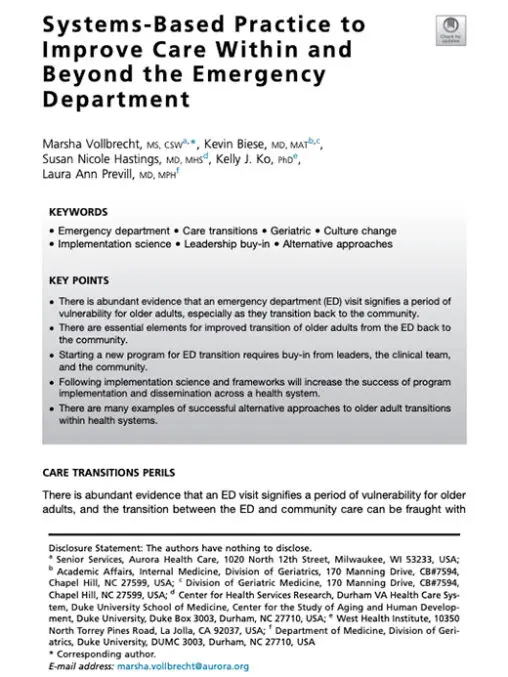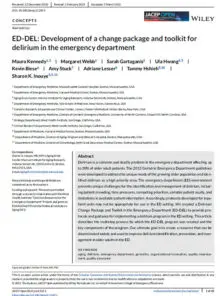Systems-Based Practice to Improve Care Within and Beyond the Emergency Department
Key Points
• There is abundant evidence that an emergency department (ED) visit signifies a period of
vulnerability for older adults, especially as they transition back to the community.
•There are essential elements for improved transition of older adults from the ED back to
the community.
• Starting a new program for ED transition requires buy-in from leaders, the clinical team,
and the community.
• Following implementation science and frameworks will increase the success of program
implementation and dissemination across a health system.
• There are many examples of successful alternative approaches to older adult transitions
within health systems.
Care Transition Perils
There is abundant evidence that an ED visit signifies a period of vulnerability for older adults, and the transition between the ED and community care can be fraught with challenges. 1–4 In particular, providing information to patients who are acutely ill or injured and their families is difficult in a busy ED. Many older adults have cognitive, vision, or hearing impairments and/or low health literacy, making it even more difficult to receive, process, and retain sometimes complicated discharge instructions. Patients with preexisting chronic illnesses, suboptimal medication therapy, and poor understanding of ED discharge information are at higher risk of return visits, underscoring the need to improve ED care transitions.5–7 This article describes some challenges of care transitions, reviews best practice strategies, provides an example of systems-based improvements at a healthcare system in Wisconsin, and outlines some lessons learned.




